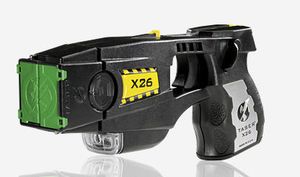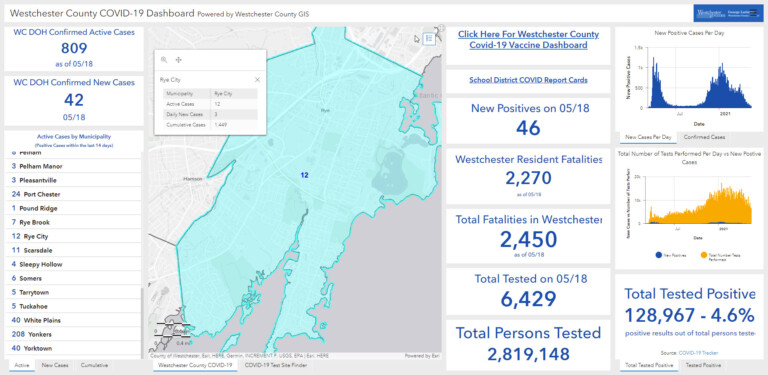The Taser Letters: Not Exactly Love Notes Between Rye PD and Rye Police Association
 The Rye Police Department (Rye PD) has had tasers for the last three years. In the past, the two department tasers have been confined to Rye PD headquarters and to a patrol car operated by the on duty supervisor. Just recently, as discussed at the last city council meeting, the Rye PD has expanded the use of the tasers, allowing one of the tasers to be carried on the person of the on duty supervisor (or other officer if a supervisor is not available).
The Rye Police Department (Rye PD) has had tasers for the last three years. In the past, the two department tasers have been confined to Rye PD headquarters and to a patrol car operated by the on duty supervisor. Just recently, as discussed at the last city council meeting, the Rye PD has expanded the use of the tasers, allowing one of the tasers to be carried on the person of the on duty supervisor (or other officer if a supervisor is not available).
What is perhaps more revealing are the "Taser Letters". Supplied to MyRye.com by Rye Police Association President Franco Compagnone, the letters show deep acrimony between the Rye PD and the Rye Police Association, the group that represents the uniformed officers of Rye, NY.
MyRye.com will highlight the "Taser Letters" all this week, so tell your friends and feel free to leave comments or point us to other original documents (you can contact us via email or broadcast a note on Twitter and call us out(@MyRye)).
In the first of the Taser Letters,the discussion centers around how an unapproved taser holster was being used by an officer. This Taser Letter is important for the other letters that become more acrimonious. The letter is from Police Commissioner Connors of the Rye Police Department to Police Officer and Rye Police Association President Franco Compagnone and dated April 2, 2009, the Rye PD states:
"It was recently brought to our attention of the Department that a different holster, apparently purchased by an officer with personal funds, was being used. Members of the Department have been directed to use only the Department authorized holster."
Read the first Taser Letter. Don't know how a taser works? Watch this taser video from the history channel.
Tomorrow MyRye.com will print Taser Letter two.






I can see where this is going already. The Rye PBA needs to really take a step back and stop complaining about every single thing. At first I thought it was only Tim C (with his multiple ID’s on Lohud) bitching and moaning. I really didn’t expect this from Franco. I know that when he was on the job in MV he was a great guy. Can’t believe that he has changed that much. We’ll see.
Keep in mind that a police force is a para-military organization. If the rule says only department approved holsters, then that is what is used. Imagine Jon Lovitt taking on a case where they feel the police didn’t take swift action. Don’t you think that he is going to jump all over the “non-approved holster” (backed with testimony from Taser Int’l) that the holster caused the death of his clients’ son/daughter? Think this is far-fetched??? Google Lovitt.
I’ll have more to say tomorrow…
Read the following article about tasers, then imagine one of Rye’s finest chasing someone, then deciding to taser them b/c they’re getting too tired to continue the pursuit. Carrying tasers can increase violence by police, and can easily result in an unintended death. Note that their use to “protect” police officers has been morphing into “controlling” prisoners, suspects and non-violent protesters.
Do we really want to be exposing the city to more lawsuits?
Taser International Inc. maintains that its stun-guns are “changing the world and saving lives everyday.” There is no question that they changed Jack Wilson’s life. On Aug. 4, in Lafayette, Colo., policemen on a stakeout approached Jack’s son Ryan as he entered a field of a dozen young marijuana plants. When Ryan took off running, officer John Harris pursued the 22-year-old for a half-mile and then shot him once with an X-26 Taser. Ryan fell to the ground and began to convulse. The officer attempted cardiopulmonary resuscitation, but Ryan died.
According to his family and friends, Ryan was in very good physical shape. The county coroner found no evidence of alcohol or drugs in his system and ruled that Ryan’s death could be attributed to the Taser shock, physical exertion from the chase and the fact that one of his heart arteries was unusually small.
In October, an internal investigation cleared Officer Harris of any wrongdoing.
Wilson says that while his son had had brushes with the law as a juvenile and struggled financially, he was a gentle and sensitive young man who always looked out for his disabled younger brother’s welfare, and was trying to better his job prospects by becoming a plumber’s apprentice.
“Ryan was not a defiant kid,” says his father. “I don’t understand why the cop would chase him for a half-mile, and then ‘Tase’ him while he had an elevated heart rate. If [the officer] hadn’t done that, we know that he would still be alive today.”
Ryan is one of nearly 200 people who have died in the last five years after being shot by a Taser stun gun. In June, the U.S. Department of Justice announced that it would review these deaths.
Over the same period, Taser has developed a near-monopoly in the market for the weaponry. Increasingly, law enforcement officials use such weapons to subdue society’s most vulnerable members: prisoners, drug addicts and the mentally ill, along with “passive resisters,” like the protesters demonstrating against Florida Governor Jeb Bush’s attendance of a Rick Santorum fundraiser in Pittsburgh on Oct. 9.
Taser has built this monopoly through influence peddling, savvy public relations and by hiring former law enforcement and military officers — including one-time Homeland Security chief hopeful, Bernard Kerik. And now that questions are being raised about the safety of Taser weaponry, the company is fighting back with legal and marketing campaigns.
“The impetus for Tasers came from the often community-led search for ‘less-than-lethal’ police weapons,” explains Norm Stamper, former chief of the Seattle Police Department and author of Breaking Rank. “[There were] too many questionable or bad police shootings, and cops saying, correctly, that there are many ambiguous situations where a moment’s hesitation could lead to their own deaths or the death of an innocent other.”
According to Taser’s promotional materials, its stun guns are designed to “temporarily override the nervous system [and take] over muscular control.” People who have experienced the effect of a Taser typically liken it to a debilitating, full-body seizure, complete with mental disorientation and loss of control over bodily functions.
Many Taser-associated deaths have been written up by coroners as being attributable to “excited delirium,” a condition that includes frenzied or aggressive behavior, rapid heart rate and aggravating factors related to an acute mental state and/or drug-related psychosis. When such suspects are stunned, especially while already being held down or hogtied, deaths seem to occur after a period of “sudden tranquility,” as Taser explains in its CD-ROM training material entitled, “Sudden Custody Death: Who’s Right and Who’s Wrong.” In that same material, the company warns officers to “try to minimize the appearance of mishandling suspects.”
Taser did not respond to requests for an interview. But its press and business-related statements have consistently echoed the company’s official position: “TASER devices use proprietary technology to quickly incapacitate dangerous, combative or high-risk subjects who pose a risk to law enforcement officers, innocent citizens or themselves.” Another brochure, specifically designed for law enforcement, clearly states that the X26 has “no after effects.”
Ryan Wilson’s family can attest otherwise, as can many others.
In the span of three months — July, August and September — Wilson’s Taser-related death was only one among several. Larry Noles, 52, died after being stunned three times on his body (and finally on his neck) after walking around naked and “behaving erratically.” An autopsy found no drugs or alcohol in his system. Mark L. Lee, 30, was suffering from an inoperable brain tumor and having a seizure when a Rochester, N.Y., police officer stunned him. In Cookeville, Ala., 31-year-old Jason Dockery was stunned because police maintain he was being combative while on hallucinogenic mushrooms. Family members believe he was having an aneurysm. And Nickolos Cyrus, a 29-year-old man diagnosed with paranoid schizophrenia, was shocked 12 times with a Taser stun gun after a Mukwonago, Wis., police officer caught him trespassing on a home under construction. An inquest jury has already ruled that the officer who shot Cyrus — who was delusional and naked from the waist down when he was stunned — was within his rights to act as he did.
Although the company spins it otherwise, Taser-associated deaths are definitely on the rise. In 2001, Amnesty International documented three Taser-associated deaths. The number has steadily increased each year, peaking at 61 in 2005. So far almost 50 deaths have occurred in 2006, for an approximate total of 200 deaths in the last five years.
Amnesty International and other human rights groups have also drawn attention to the use of Tasers on captive populations in hospitals, jails and prisons.
In fact, the first field tests relating to the efficacy of the “Advanced Taser” model in North America were conducted on incarcerated men. In December 1999, the weapon was used, with “success,” against a Clackamas County (Ore.) Jail inmate. The following year, the first-ever Canadian use of an Advanced Taser was by the Victoria Police, on an inmate in psychiatric lockdown. Since that time, Taser deployment in jails and prisons has become increasingly commonplace, raising concerns about violations of 8th Amendment prohibitions against cruel and unusual punishment.
enough of the back and forth — our police officers serve our community – we need to put our faith and trust in them as they “serve and protect” and we must ensure they have the right tools for the job. Let them have the tasers, ensure a well defined policy, and manage it. This is rediculous!
The Taser is a good tool for a police officer. Every tool (gun, nightstick, baton) has drawbacks. Just like anything else, when used correctly, it will be an asset. Yes — it is possible that undesired results will cause injury, but I have seen cases where a suspect was put in handcuffs and that triggered an anxiety attack. Do you blame the handcuffs?
The Taser is another tool that the RPD should have.
Tom, Guardian –
So, the two of you are saying that cops can always be trusted to do the right thing, that the power to stun people who may get a little boisterous will never be abused. Just curious… what do the two of you do for a living?
This is a pathetic dialogue!!!
The problem is not the officers.
THE PROBLEM IS THE MANAGEMENT (Connors,Falk,Verille) OF THE OFFICERS(RPD) &
THE MANAGEMENT(City Manager) OF THE IDIOTS(Connors,Falk,Verille) RUNNING THE RPD!!!
AS USUAL IN RYE WE DISCREDIT THE COLD HARD FACTS!!!
NTOUCH,
Is there anyone in Crye that is doing a good job besides yourself?
NTOUCH –
You’re completely missing the whole point of my question – is it wise to provide Rye police officers (or any cops, for that matter) with tasers, which have a history of being mis-used and abused by cops, sometimes with fatal results. The quality of management is irrelevant to this question.
I notice that Tom and Guardian have not ansered my question as to their occupation, and I suspect they’re in the business of law enforcement.
I don’t know who this Guardian person is but he speaks as if he personally knows me, that I worked in MVPD and that I am a great guy, which are both true. Knowing me and knowing of me are two different things. I have learned while employed here in RPD that some people operate in a manner of disseminating misinformation about good Officers in attempt to tarnish them. My Association with my close friend and colleague Officer Tim Chittenden, the past PBA president has nothing to do with what type of person I am. My reputation as a professional, a person that cares and someone who takes his job seriously followed me here to RPD. The last thing I ever do is complain, what I am doing along with the assistance of the membership are 2 things of equal importance (1) to make sure we all go home to our families (2) protect the Citizens of Rye. I think maybe you may know of another good guy, Officer Kevin Pallone. Officer Pallone was born and bred here in Rye. He is also a loving father to his young son. Officer Pallone has been out of work due to an injury for close to one year and the reason was is that he was injured attempting to apprehend a violent suspect. When I say violent suspect I mean on PCP, 6″2,245 lb. male who had broken into the apartment of a woman and was terrorizing her. It took three RPD Officers and one PCPD officer to subdue the suspect and thats after the pepper mace had no effect. The result was Officer Pallone severely injuring tendons and ligaments in his hand, the other officers had minor injuries but all of them were covered in the suspects blood. The suspect had broken the windows in a fit of rage and climbed in cutting his hands and arms. So I am complaining when I address as the PBA President why the TASER was not readily available for the officers? So it’s complaining when I question why the Department Taser is locked in a safe in HQ or locked in the supervisor truck parked at HQ? It’s my job to question Mr. Connors faulty policy, especially when the end result of such policy causes severe injuries to Officers. There is no reason why in this day and age that if the TASER is available, that an officer would have to lay a hand on a suspect such as this. The bottom line is the job got done, but at a high cost. Officer Pallone is now going to Specialists in order to determine if his injury requires surgery. This has caused unnecessary stress to Officer Pallone and his family. Did I mention he has a young son and because of his injuries he is limited to how he can interact with him? What you call complaining is what I call addressing the issue, however aggressive I have too before another Officer and or Rye resident is hurt or killed. The letters addressing the TASERS are correspondence between our Lawyer and Mr. Connors and are respectfully written. The Holster mentioned was approved by Mr. Connors at the inception of the Taser program. The RPD Officer in charge of training the rest of the Department purchased this Holster with personal funds and was to be reimbursed, but never was. So as you would say, The PBA complained about the officer not being reimbursed and in typical retaliatory response from Mr. Connors he took it off the road. Did I mention it was a Thigh Holster ( with Taser) that, “as per” his policy we were not allowed to wear it? That we where directed to leave the TASER (in the Holster) locked in our vehicles until a situation presented itself and then the Officer would go fetch it. In the real world, the situation and the suspects will not wait and give you an opportunity to brandish equipment that will benefit you and hurt them. The letters will show from the inception, that the Police Association had made and continued to make substantive comments in regard to changing Mr. Connors faulty TASER policy. June 11th Mr. Connors present a policy to the City Council that was not meted to the Rye PBA. On June 12th, he issues a departmental memorandum that the thigh holster is now approved departmental equipment. The question is now why was the contents of memorandum not incorporated into his presentation the night before? The answer is no one knows but Mr. Connors. Lastly, I do not hide and will not hide behind made up “Blog” names or “Pen” names in order to address issues that pertain to Myself and the members of Police Association. People that know me will attest to my character and sincerity but this should not be taken as a sign of weakness, as some have mistakenly done. I welcome any respectful and constructive dialogue that anyone may have and discussing it in a civil manner. Please feel free to contact myself for any issue on our website, thank you for your time. http://WWW.RYEPBA.ORG
Franco Compagnone
President; Rye Police Benevolent Association
Don’t confuse me with someone not on the officers side. If it was up to me you guys would have semi automatic weapons.
The difference between a semi-automatic weapon (or a handgun) and a taser is that one WILL solve the problem permanently, and one MAY solve the problem temporarily – or it MAY result in death.
By opting for a taser, the officer doesn’t want to eliminate the threat permanently, but the threat may die anyway, leading to a lawsuit of wrongful death. Plus, there’s a pattern of abuse with these tasers in several PDs across the nation, which has resulted in lawsuits.
The danger of a taser is that the police won’t find out if the targeted individual will have a fatal reaction to it until AFTER its use. And unless the perp who contributed to the injury suffered by Pallone informed the officers on the scene that he was high on PCP, there was no way the POs knew that he was high on the drug until after he was tested.
As Eddie Murphy so eloquently put it in Trading Places, “May I suggest the use of a nightstick, officers?”